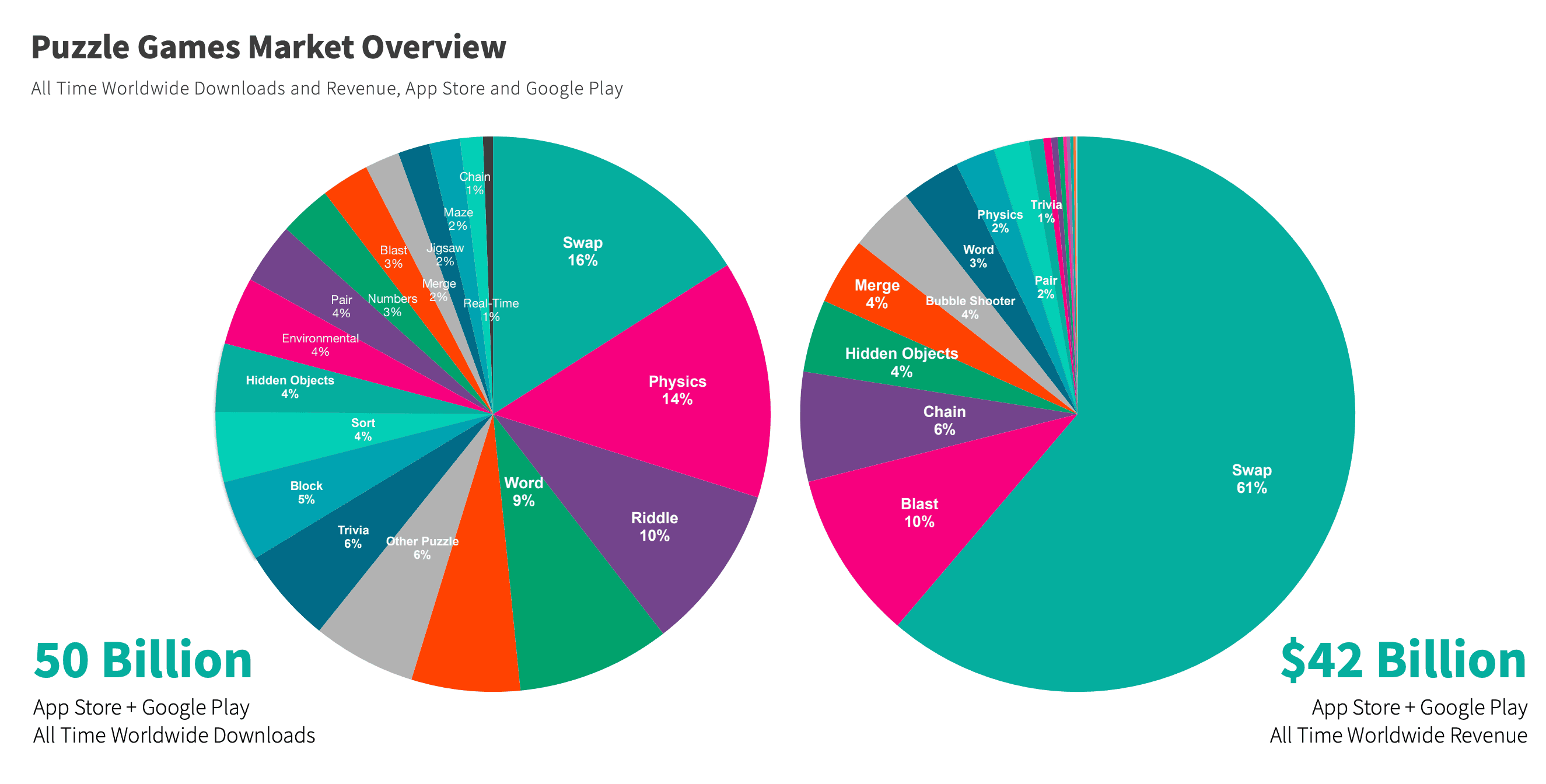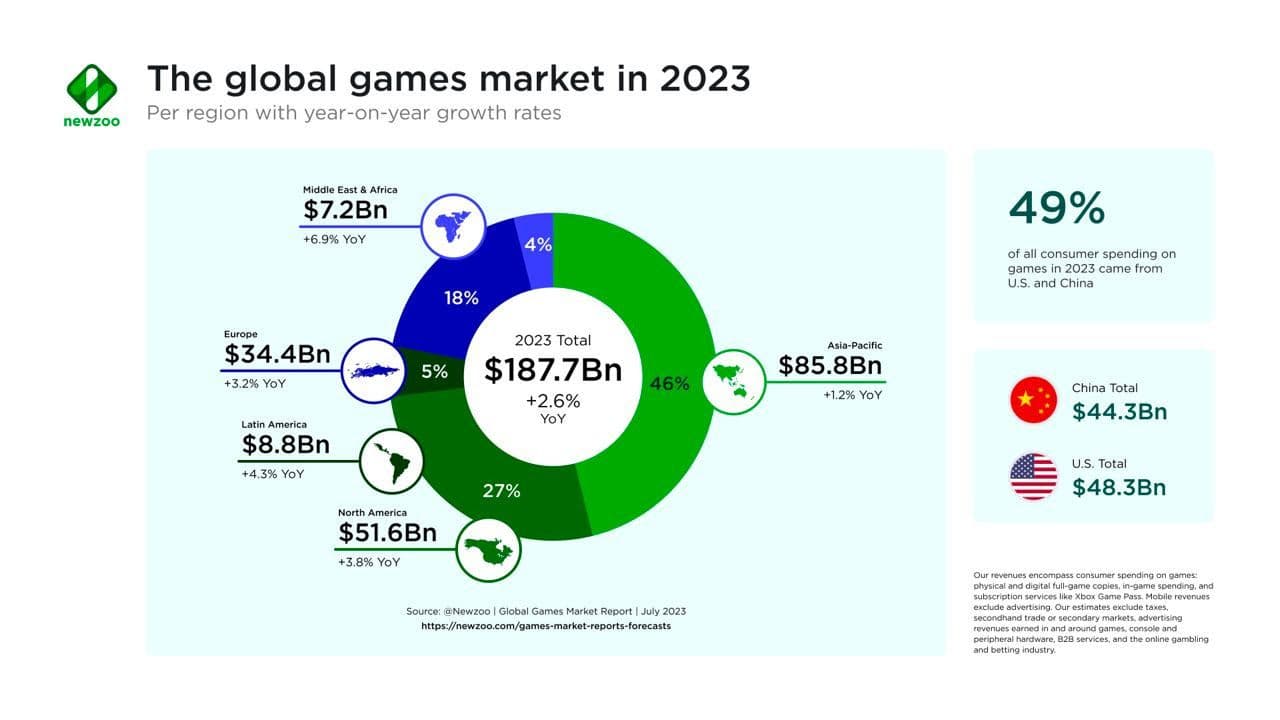The mobile gaming industry has witnessed remarkable growth over the past decade, and puzzle games have played a pivotal role in shaping this success story. A recent report from Sensor Tower reveals that mobile puzzle games have earned an astounding $42 billion in revenue over the past 11 years. In this article, we'll delve into the evolution of mobile puzzle gaming, explore the rise of subgenres, examine revenue trends in different countries, and give insights for web3 gaming.

The Reign of Swap Subgenre:
Sensor Tower's latest classification of puzzle game genres has placed the Swap subgenre at the forefront, both in terms of downloads (over 8 billion) and revenue (over $25 billion). This subgenre primarily includes Match-3 games, a timeless favorite among mobile gamers. It's evident that the simple yet addictive gameplay of matching colorful objects has continued to captivate players.


The Rise of Real-Time Puzzles:
While Swap remains dominant, the report also highlights the emergence of Real-Time puzzles as one of the fastest-growing subgenres. Games like Tetris and Traffic Jam Fever have achieved notable success in this category, amassing 11 million and 10 million downloads, respectively, with revenue figures of $231 thousand and $212 thousand.

Hybrid Casual Puzzles Take Center Stage:
Sensor Tower's data indicates a staggering YoY revenue growth of 429.67% for hybrid casual puzzles in the first five months of 2023. Games such as Triple Match 3D, Match 3D, and Brain Test: Tricky Puzzles are notable representatives of this category. What's particularly intriguing is the retention rates; D1 Retention ranging from 39% to 45%, D11 Retention hovering around 15%, and D41 Retention standing at 5-10%, with Triple Match 3D achieving a remarkable 13% at D41.

A Global Perspective on Puzzle Game Revenue:
The puzzle gaming landscape is not just about numbers; it's also about regional preferences and trends. In the United States and Europe, revenue comes from a diverse set of subgenres, including Blast, Merge, Word, Hidden Object, alongside Swap. China, on the other hand, exhibits a strong preference for the Swap subgenre, accounting for 83% of its revenue, with Merge following at 9%. In Japan, Swap and Chain are the dominant subgenres, contributing 53% and 27% to the country's puzzle game revenue, respectively.

Final Thoughts:
Mobile puzzle games have evolved significantly over the past 11 years, becoming a financial powerhouse within the gaming industry. The reign of the Swap subgenre, the emergence of Real-Time puzzles, and the astounding growth of hybrid casual puzzles all highlight the dynamic nature of this genre. Furthermore, regional preferences continue to shape revenue distribution, showcasing the global appeal of mobile puzzle gaming. As we move forward, it's clear that puzzle games will continue to be a driving force in the mobile gaming world, promising innovation and entertainment for players worldwide.
Relevance for Web3 Gaming:
The insights gleaned from Sensor Tower's comprehensive analysis of mobile puzzle gaming are undeniably relevant to the emerging world of web3 gaming. As we step into the decentralized, blockchain-powered gaming ecosystem, understanding the preferences and revenue dynamics of traditional mobile gaming provides invaluable guidance.
These insights offer a foundation for web3 game developers and investors to make informed decisions, helping them explore innovative ways to integrate blockchain technology, non-fungible tokens (NFTs), and other web3 elements into the puzzle gaming experience.
With the knowledge of what has worked in the past and how gaming trends have evolved, the web3 gaming industry can build upon this foundation to create immersive, decentralized puzzle games that captivate audiences and contribute to the continued growth of the gaming metaverse.
Share this article and tag us on any of our socials to let us know.

